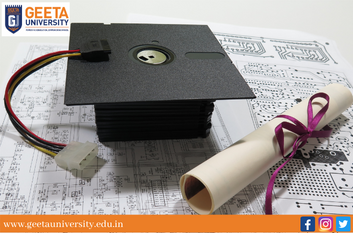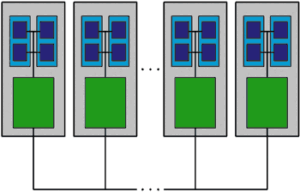
Introduction
Fingerprint science stands as a cornerstone in forensic investigation, weaving intricate tales of identity, criminality, and justice. This age-old practice has evolved from a rudimentary form of identification to a sophisticated forensic tool embraced globally. In this comprehensive exploration, we embark on a journey through the history, methodologies, advancements, and global impact of fingerprint science.Fingerprints are indispensable in forensic science, serving as a cornerstone in the investigation and resolution of crimes. The unique ridge patterns present on the fingertips and palms of individuals provide an unparalleled means of identification, with no two fingerprints being alike. Through meticulous analysis of ridge characteristics and minutiae points, forensic experts can classify and compare fingerprints with remarkable precision. This process enables law enforcement agencies to link suspects to crime scenes, establish associations between individuals and criminal activities, and provide critical evidence in court proceedings. The reliability and permanence of fingerprints make them invaluable tools in forensic investigations, offering insights into the identities, actions, and movements of individuals involved in criminal activities. As technology continues to advance, fingerprint analysis remains a fundamental component of forensic science, ensuring justice and accountability in the face of adversity.The study of fingerprints, known as dactylography, has been instrumental in solving crimes, identifying individuals, and exonerating the innocent.
The Uniqueness of Fingerprints:
One of the key aspects that make fingerprints indispensable in forensic science is their uniqueness. No two individuals, not even identical twins, have identical fingerprints. This uniqueness is attributed to the complex and intricate ridge patterns formed during fetal development, which remain unchanged throughout a person’s lifetime, except in rare cases of injury or certain skin conditions.
Classification and Identification:
Fingerprint identification relies on the analysis of ridge patterns, minutiae points, and other distinctive features present on the friction ridges of the fingers and palms. These features are categorized into three main types: arches, loops, and whorls, each with specific subtypes and variations. The arrangement and characteristics of these patterns allow forensic experts to classify and compare fingerprints for identification purposes.
Methodologies and Techniques:
The process of fingerprint identification typically involves three main stages: acquisition, analysis, and comparison.
Acquisition: Fingerprint images are obtained using various techniques, including ink-and-paper methods, optical scanners, and digital sensors. Advances in technology have led to the development of live-scan systems, which capture high-resolution images of fingerprints electronically, ensuring clarity and accuracy in analysis.
Origins and Historical Significance:
The origins of fingerprint identification can be traced back to ancient civilizations, where fingerprints were used as seals on clay tablets in Mesopotamia and as marks of identity in ancient China. However, it wasn’t until the 19th century that the modern era of fingerprint science began.
The pioneering work of Sir Francis Galton, a British polymath, laid the foundation for fingerprint classification and identification. Galton’s comprehensive study of fingerprints led to the classification system known as “Galton Points,” which categorized fingerprints based on their patterns. Concurrently, the work of Sir Edward Henry in the late 19th century introduced a more practical and systematic method of fingerprint classification, known as the Henry Classification System, which revolutionized forensic identification.
Landmark Cases and Recognition:
The watershed moment for fingerprint science came in 1892 when Argentinean police officer Juan Vucetich used fingerprints to solve a murder case, marking the first official use of fingerprints in criminal identification. Subsequently, high-profile cases like the 1910 Fingerprint Inquiry in England solidified the credibility of fingerprint evidence in courts worldwide.
The 20th century witnessed widespread adoption of fingerprinting by law enforcement agencies globally. Institutions like the Federal Bureau of Investigation (FBI) in the United States and Interpol on the international stage played pivotal roles in standardizing fingerprinting protocols and databases, enhancing collaboration among countries in solving cross-border crimes.
Methodologies and Techniques:
The process of fingerprint identification involves three main stages: acquisition, analysis, and comparison. Modern techniques employ cutting-edge technology to capture high-resolution images of fingerprints, such as optical scanners and digital sensors, ensuring accuracy and reliability in identification.Once captured, forensic experts analyze the ridge patterns, minutiae points, and other distinctive features of fingerprints to create a digital profile. Automated fingerprint identification systems (AFIS) and biometric databases aid in rapid matching and comparison of fingerprints against vast repositories, facilitating swift identification of suspects and missing persons.
Methodologies and technology play pivotal roles in the collection, analysis, and utilization of fingerprints in various fields, including forensic science, law enforcement, and border security. Traditional ink-and-paper methods have given way to digital fingerprinting technologies, such as live-scan systems and portable scanners, which capture high-resolution images of fingerprints with precision and efficiency. These digital images are then analyzed using advanced algorithms and software, which identify unique ridge patterns, minutiae points, and other distinguishing features. Automated Fingerprint Identification Systems (AFIS) facilitate rapid matching and comparison of fingerprints against extensive databases, enabling law enforcement agencies to identify suspects, solve crimes, and enhance public safety. Additionally, advancements in three-dimensional (3D) imaging, multispectral imaging, and chemical enhancement techniques have expanded the capabilities of fingerprint analysis, enabling forensic experts to capture detailed images of fingerprints from challenging surfaces and substrates. Biometric integration has further enhanced the utility of fingerprints in identity verification, access control, and digital security applications. By harnessing methodologies and technology, stakeholders can leverage the power of fingerprints to address complex challenges, uphold ethical standards, and promote safety and security in an increasingly interconnected world.
Advancements and Innovations:
Advancements in fingerprint science continue to push the boundaries of forensic investigation. Emerging technologies like 3D fingerprinting and multispectral imaging offer enhanced capabilities in capturing and analyzing fingerprints from challenging surfaces and substrates, such as wet or porous materials.Moreover, research in the field of biometrics explores the integration of fingerprint data with other biometric modalities, such as iris scans and facial recognition, to create comprehensive identity verification systems with heightened accuracy and security.
1.Digital Fingerprinting Technology: Traditional ink-and-paper methods have largely been replaced by digital fingerprinting technology, which captures high-resolution images of fingerprints electronically. Live-scan systems and portable fingerprint scanners enable law enforcement officers to obtain clear and precise fingerprint images in real-time, reducing the risk of smudging or distortion.
2.Automated Fingerprint Identification Systems (AFIS): AFIS revolutionized the process of fingerprint comparison by automating the matching and identification of fingerprints against vast databases of known prints. These systems utilize advanced algorithms to analyze ridge patterns, minutiae points, and other features, enabling rapid and accurate identification of suspects, missing persons, and unidentified remains.
3.Three-Dimensional (3D) Fingerprint Imaging: Traditional fingerprinting techniques capture two-dimensional images of friction ridges, which may lack depth and detail, especially on curved or uneven surfaces. Three-dimensional imaging technologies, such as optical coherence tomography and confocal microscopy, provide enhanced depth perception and resolution, enabling forensic experts to capture detailed images of fingerprints from challenging surfaces and substrates.
4.Multispectral Imaging: Multispectral imaging combines visible, infrared, and ultraviolet light to capture comprehensive images of fingerprints, revealing hidden or obscured details that may not be visible to the naked eye. This technology enhances the visualization of latent fingerprints on various surfaces, including porous materials, fabrics, and textured surfaces, thereby expanding the scope of fingerprint analysis in forensic investigations.
5.Chemical Enhancement Techniques: Chemical enhancement techniques, such as ninhydrin, cyanoacrylate fuming, and DFO (1,8-diazafluoren-9-one), are used to develop latent fingerprints on porous and non-porous surfaces. These techniques react with the components of sweat and oils present in fingerprints, producing visible and durable prints that can be captured and analyzed using digital imaging systems.
6.Biometric Integration: Fingerprint data is increasingly being integrated into biometric identification systems, such as facial recognition and iris scanning, to create comprehensive identity verification solutions. These integrated biometric systems enhance security and authentication in various applications, including border control, access control, and digital identity management.
7.Forensic DNA Analysis: Advances in forensic DNA analysis have complemented fingerprint science by providing additional layers of identification and evidence. DNA recovered from fingerprint residues, such as skin cells and saliva, can be extracted and analyzed to establish links between individuals and crime scenes, corroborating fingerprint evidence and strengthening the prosecution’s case.
8.Cloud-Based Fingerprint Databases: Cloud-based fingerprint databases enable secure storage, sharing, and access to fingerprint data across multiple agencies and jurisdictions. These centralized repositories facilitate collaboration among law enforcement agencies, expedite information sharing, and enhance the efficiency of fingerprint-based investigations on a global scale.
Global Impact and Applications:
Fingerprint science transcends geographical boundaries, serving as a fundamental tool in crime prevention, law enforcement, border security, and civil identification worldwide. From combating terrorism to resolving humanitarian crises, fingerprints play a pivotal role in identifying individuals, apprehending criminals, and providing closure to families of missing persons.
In regions plagued by conflict or natural disasters, fingerprinting emerges as a vital tool in humanitarian efforts, enabling the registration and reunification of displaced populations, safeguarding vulnerable groups, and restoring dignity and identity to the marginalized.
The application of fingerprints has had profound global impacts across various fields, ranging from law enforcement and criminal justice to border security, humanitarian efforts, and beyond. In law enforcement, fingerprints serve as invaluable tools for identifying suspects, linking individuals to crime scenes, and providing crucial evidence in criminal investigations and court proceedings. The widespread adoption of automated fingerprint identification systems (AFIS) has facilitated rapid and accurate matching of fingerprints against vast databases of known prints, enabling law enforcement agencies to solve cold cases, apprehend criminals, and prevent future crimes.Moreover, fingerprints play a vital role in border security and immigration control, where biometric systems utilize fingerprint data to verify the identities of travellers, screen for criminal records, and prevent identity fraud. Biometric passports, visas, and identity cards incorporate fingerprint technology as a robust security measure, enhancing border control and ensuring the integrity of travel documents.In humanitarian efforts, fingerprints are instrumental in the registration and identification of displaced populations, refugees, and asylum seekers. During humanitarian crises, such as natural disasters or conflicts, fingerprinting facilitates the reunification of families, the distribution of aid and assistance, and the protection of vulnerable individuals, including children and victims of trafficking.
Furthermore, fingerprints have applications beyond law enforcement and humanitarian contexts, extending into sectors such as healthcare, finance, and digital security. Biometric authentication systems utilize fingerprints for secure access to electronic devices, financial transactions, and sensitive data, offering enhanced security and convenience in everyday life.
Overall, the global impact of fingerprint applications is far-reaching, contributing to enhanced security, public safety, and efficiency across diverse sectors and regions. By harnessing the power of fingerprints, societies worldwide can strengthen their resilience, uphold justice, and build safer and more inclusive communities for all.
Challenges and Ethical Considerations:
The use of fingerprints in various fields presents a range of challenges and ethical considerations that necessitate careful attention and consideration. One significant challenge is the risk of privacy infringement, as the collection and storage of biometric data, including fingerprints, raises concerns about unauthorized access and potential misuse. Ensuring robust data security measures and transparency in data handling practices is essential to safeguarding individuals’ privacy rights. Additionally, there are concerns regarding the accuracy and reliability of fingerprint analysis, which may lead to false positives or misidentifications, potentially resulting in unjust accusations or convictions. Addressing these challenges requires ongoing advancements in fingerprint technology, rigorous training for forensic examiners, and the implementation of quality assurance protocols. Furthermore, ethical considerations surrounding consent, autonomy, and discrimination must be carefully navigated to ensure that individuals’ rights and dignity are respected in the collection and use of fingerprint data. Promoting awareness, transparency, and accountability in the use of fingerprints can help mitigate these challenges and uphold ethical standards in the application of biometric technology.
Despite its widespread adoption and utility, fingerprint science is not without its challenges and ethical considerations. Concerns regarding privacy, data security, and potential misuse of biometric information underscore the need for robust regulatory frameworks and ethical guidelines governing the collection, storage, and use of fingerprint data.
Moreover, disparities in access to fingerprinting technology and expertise across regions pose challenges in ensuring equitable access to justice and forensic services. Addressing these disparities requires concerted efforts to enhance capacity-building, knowledge-sharing, and technology transfer initiatives in collaboration with international partners and organizations.
Fingerprint science stands as a testament to human ingenuity and perseverance in the pursuit of truth and justice. From its humble origins to its global prominence today, fingerprinting has evolved into a sophisticated forensic discipline with far-reaching implications for society.As we navigate the complexities of the modern world, fingerprint science remains an indispensable tool in the arsenal of law enforcement, forensic investigation, and humanitarian endeavors. By embracing innovation, collaboration, and ethical principles, we can harness the full potential of fingerprint science to safeguard lives, uphold justice, and build a more secure and equitable world for all.

Mr. Sahil Sharma
Forensic Science Geeta University Panipat
Related Posts
Большие Выигрыши В Слота
Большие Выигрыши В Слотах Как Работают Онлайн Слоты В Казино Все Про Устройство Онлайн Слотов В Блоге Jokermonarch Content Лучших Сайтов Онлайн-слотов На Реальные Деньги

The Dangers and Risks of Self-Medication with Antibiotics and Alternative Approaches
Introduction: Self-medication has become increasingly common in today’s society, where individuals are inclined to seek quick remedies for their health issues. Antibiotics, in particular, are

Time management tips for student
Time management tips for student When students are trying to balance the demands of their academics, extracurricular activities, and personal commitments, time is a valuable

Which Computer Science Engineering Specialization is in Great Demand? – Geeta University
In the rapidly-evolving technological world, pursuing a degree in computer science engineering is
unquestionably a wise choice, but picking a focus for your post-graduate studies in the same field can be
highly confusing. This uncertainty worsens with the numerous specialties that come with software
engineering schools. If you're having trouble deciding which specialisation to pursue, the information
provided here should help you make a better choice. You can pursue a CSE engineering degree from any
top university for software engineering.
B. Tech Computer science engineering:
A four-year undergraduate degree in B. Tech computer science engineering is created to give students
the education they need in the numerous fields of computer application, research, and development,
and computer programming. Computer programming and networking, which include algorithms,
computation, programming languages, programme design, computer hardware, and computer
software, are among the CSE disciplines covered in the engineering programme at Geeta University.
As one of the top universities for software engineering, Geeta University's B. Tech. CSE in Software
Engineering programme offers a wide range of specialties from which you can select in accordance with
your preferences and areas of interest. These specialisations include:
- Artificial Intelligence
- Full stack development
- Cyber security
- Data science & Analytic
- Cloud computing
- Game design & AR UI/UX design
Best specialization to choose for B. Tech CSE:
Since computer science engineering is a broad area of technology, there are numerous specialisations
one can pick from to pursue his engineering degree in. There is a considerable demand for workers with
a degree in software engineering due to developing technology and a more digital society. It is up to
your interest and knowledge what you want to choose from the several employment categories that
correspond to the various specialisations.
Although the B. Tech. CSE programme offers a wide range of electives, the following highly sought-after
specialisations will help you learn and develop more in the future. These specialisations would be
considered the best fit for you, both in terms of gaining knowledge and looking into job opportunities.
Data science and machine learning:
These days, the need for artificial intelligence and machine learning is rising quickly, and so is the
specialisation of this subject all over the world. Programming language, neural networks, human
intelligence, and other topics will be more heavily studied in this specialisation in data science and
machine learning. After completing this, you will have a tonne of employment options, including those
for data analysts, research scientists, AI engineers, machine learning engineers, data miners, etc.
IoT – IoT (Internet of Things) is concerned with the things or devices that can be managed through the
internet from your mobile device over a wifi connection, be it your appliance, televisions, AC, etc. This
field is expanding quickly due to advancing technology. We have a tonne of opportunities thanks to the
Internet of Things for the future, including the following:
- Data scientis
- Network Engineer
- Information security engineers
- Embedded program engineers
- Hardware engineer
Due to the advent of IoT, engineering today has various advantages in a variety of industries to work in,
including software development and electrical and electronic products.
Artificial Intelligence:
Artificial intelligence is a developing area of computer science and engineering that is one of the fastest-
growing technologies and offers a wide range of career options. The focus of this CSE specialty is on
training computers and software to analyse a given set of inputs by studying human intelligence. One
can consider careers as a data scientist, software engineer, business intelligence engineer, research
scientist, robotic scientist, or artificial engineer after earning a B. Tech. in CSE.
Blockchain technology:
Selecting this concentration will help you sharpen your computer science, programming, and data
science abilities. It offers you a wide range of career opportunities, including those for data miners,
blockchain engineers, security specialists, and many more.
Conclusion:
A B. Tech in computer science engineering is a wise decision if you want to shape your future and
improve yourself. In addition to AI and data science, the Internet of Things, and bioinformatics, CSE has
a lot more for you to study. It also offers you a wide range of electives to pick from, giving you the
opportunity to explore a variety of job prospects in top-ranking industries with high incomes.
Related Posts

Unleashing the Power of the Quantum Realm: A Deep Dive into Quantum Computing
Unleashing the Power of the Quantum Realm: A Deep Dive into Quantum Computing The world of technology is always evolving, and with it comes the
Impact of English literature in Indian society
Birth of English Language in India is said to be emerged with the arrival of East India Company in 17th century. East India used English

The Potential of Multi-Core and Parallel Computing to Unlock Performance
The Potential of Multi-Core and Parallel Computing to Unlock Performance In the beginning… The desire for increasing performance and processing power has been a driving


